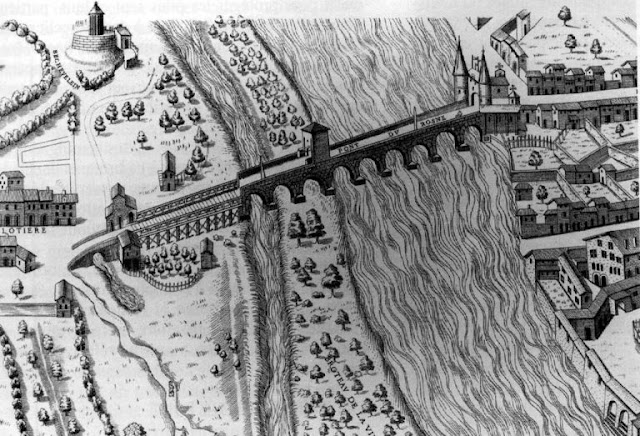 |
| September 2016 (45.7569, 4.8382) Pont de l'Universite |
In September of 1944, 22 bridges in Lyon including the Pont de l'Universite were blown up by the Wehrmacht. Photos of the destruction were taken by the Dusson family and are now available on the Instants Lyonnais Website. A temporary wooden bridge was built beside the damaged Pont de l'Universite while it was being repaired and it was reopened in 1947.
The Pont de l'Universite is 268 meters (880 ft) long and 20 meters (66 ft) wide. Each span is composed of eight built-up truss arch ribs made of wrought iron from the town of Longwy. The arches are supported on piers and abutments built from stones of Porcieu-Amblagnieu.
The Pont de l'University is highly ornamented with bright red insignias of the Republique Francaise along with a laurel leaf on the piers and with shields and fleur de lis on the arch ribs. The portion of the arch above the quay is a favorite place for exercise. I saw the man in the photo below doing pull-ups from the arch ribs.
Looking to the west (in the photo below) we see the Basilica of Notre Dame Fourviere up on a hill in Vieux Lyon several miles away. This 19th century church has an eclectic architectural style different from the traditional Gothic architecture of the other churches in Lyon.

This work is licensed under a Creative Commons Attribution-NonCommercial-NoDerivatives 4.0 International License.


















